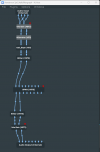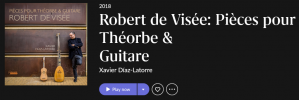I have recently experimented with Xtalk shaper using my
living room rig. This week, I installed MacroDeck onto the PC which runs Hang Loose Host and the Xtalk VST. Macrodeck is similar to Elgato StreamDeck, but uses of a phone/tablet instead of dedicated hardware to initiate custom actions. Below is a screenshot showing the custom actions I've created to support sound-field experimentation:
Pressing the 2.0 button activates simple 2.0 stereo via the VST flow below.
Pressing the 4.0 Atmos button activates Atmos 4.0 ambiphonic via this VST flow:
Finally, pressing the 2.0 Xtalk button activates 2 channel stereo, but with the Xtalk Shaper plug-in activated:
These configurations were tested using some chamber and instrumental music with which I'm familiar:
Xavier Diaz-Latorre playing De Visee on Theorbo
Nigel North, Les Voix humaines
Thibault Cauvin plays Leo Brouwer: 30 Estudios Sencillos
The Diaz-Latorre recording is extremely wet, with lots of ambience/reverb baked-in, whereas the Cauvin guitar set is dry, incorporating minimal ambience. The North set is nicely-recorded, not overly wet and exploits nice instrument spacing and depth.
I was surprised at how vastly different each of albums sound using the three surround presets. Unexpectedly, Xtalk Shaper creates the widest and deepest sound field - surpassing even the Atmos 4.0 configuration!
Now, it's all too easy to over-do any form of spatial enhancement; I typically dial back the volume of the rear surrounds or the effects knob of XTalk Shaper so that the effect is subtle, but noticeable. Anything more becomes fatiguing during extended listening.
In my opinion, crosstalk cancellation is an effect which reduces accuracy. But, the ability to dynamically change spatial rendering attributes on-the-fly can improve immersion and enjoyment. With most recordings, it seems to widen and deepen the sound field, but slightly diffuses the sound, reducing imaging clarity.
However, it's a lot of fun and given it's modest cost, I recommend experimenting with Xtalk Shaper.




